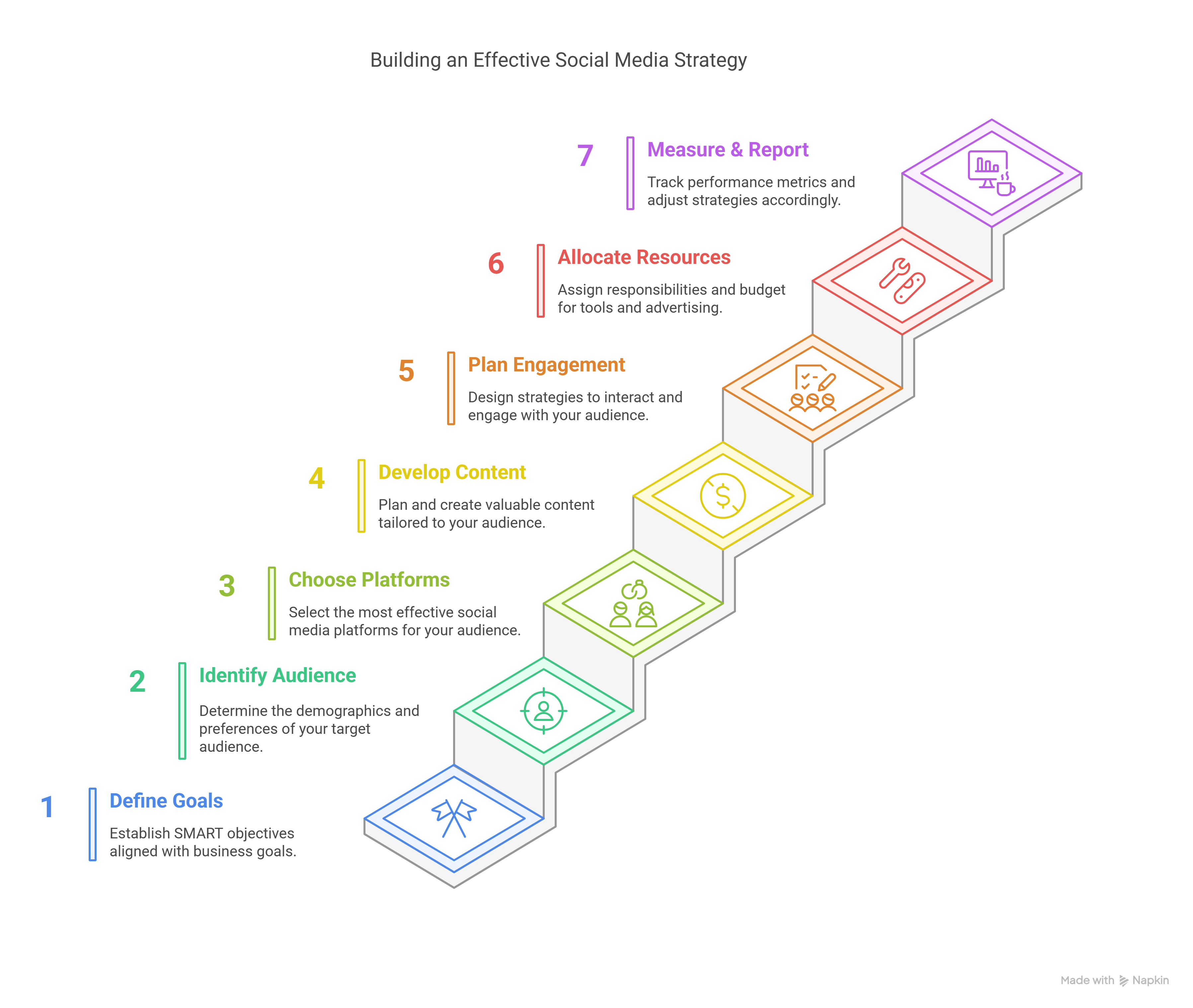Creating a Social Media Strategy
1. Define Goals & Objectives
- Explanation: Clearly state what you want social media to accomplish for your business. Goals should be SMART (Specific, Measurable, Achievable, Relevant, Time-bound) and align with broader business objectives like brand awareness, lead generation, website traffic, or customer loyalty.
- Example: A small online bookstore's SMART goal: "Increase website traffic from Instagram by 15% within the next quarter (Q3) by promoting new arrivals and author Q&As."
2. Identify Target Audience
- Explanation: Know exactly who you're trying to reach. Use market segmentation (demographics, interests, behaviors) and create detailed buyer personas (semi-fictional representations of ideal customers) to understand their needs, challenges, online habits, and which social platforms they prefer.
- Example: The bookstore identifies its primary audience as women aged 25-45, interested in contemporary fiction and book clubs, primarily active on Instagram and Facebook during evenings.
3. Choose the Right Platforms
- Explanation: Don't try to be everywhere. Focus your efforts on the 1-3 social media platforms where your target audience spends the most time and where the platform's format aligns with your content strategy (e.g., visual platforms like Instagram for products, LinkedIn for B2B).
- Example: Based on their audience research, the bookstore decides to prioritize Instagram (visuals of books, author Q&A videos) and Facebook (community building via groups, event promotion).
4. Develop a Content Plan
- Explanation: Outline what you will post. Define core content themes (topics relevant to your audience), plan a mix of content formats (images, videos, stories, links), ensure content is valuable and relevant, create a content calendar for consistency, and maintain a consistent brand voice.
- Example: The bookstore's content themes include "New Arrivals," "Author Spotlights," "Reading Nook Ideas," and "Book Club Discussions." Their calendar includes 3 Instagram posts, 5 Stories, and 2 Facebook posts per week, using a warm, knowledgeable brand voice.
5. Plan Engagement Tactics
6. Allocate Resources & Budget
- Explanation: Determine who is responsible for managing social media, creating content, and engaging. Allocate a budget for necessary tools (scheduling, analytics), content creation (e.g., graphic design, video editing), and potentially paid social advertising to boost reach or achieve specific goals.
- Example: The bookstore owner manages the accounts, allocates $50/month for a scheduling tool, and budgets $100/month for boosting posts promoting specific book launches or sales events.
7. Establish Measurement & Reporting
- Explanation: Define Key Performance Indicators (KPIs) directly linked to your goals (e.g., reach, engagement rate, website clicks, leads generated). Set up tracking using platform analytics or third-party tools. Regularly review performance data and use these insights to optimize your strategy – what's working, what's not, and why.
- Example: The bookstore tracks Instagram reach, post engagement rates, and clicks to their website link in bio weekly. They review quarterly to see if they met their 15% website traffic increase goal and adjust content based on top-performing posts.
Building an Effective Social Media Strategy
7
Measure & Report
Track performance metrics and adjust strategies accordingly.
6
Allocate Resources
Assign responsibilities and budget for tools and advertising.
5
Plan Engagement
Design strategies to interact and engage with your audience.
4
Develop Content
Plan and create valuable content tailored to your audience.
3
Choose Platforms
Select the most effective social media platforms for your audience.
2
Identify Audience
Determine the demographics and preferences of your target audience.
1
Define Goals
Establish SMART objectives aligned with business goals.

No Comments